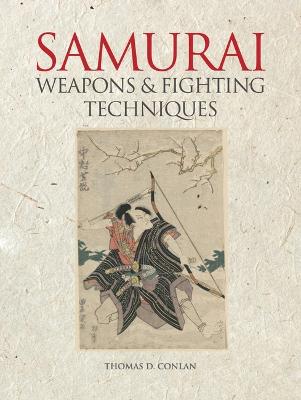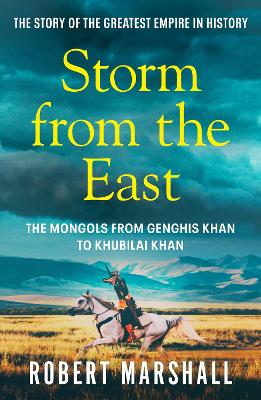Samurai Weapons and Fighting Techniques
 portes grátis
portes grátis
Samurai Weapons and Fighting Techniques
Conlan, Thomas D.
Amber Books Ltd
03/2022
224
Dura
Inglês
9781838862145
15 a 20 dias
900
Descrição não disponível.
1. Introduction
This chapter offers an overview of the medieval Japanese world and a guide to the typical battlefield and the armies that populated it. This chapter also explores the development of the professional warrior and how that role changed through time.
2. The Mounted Samurai
Most Samurai fought on horseback, although they never had the impact of mounted knights in Europe. This chapter examines the tactics, equipment, armour and weaponry of the mounted Samurai.
3. Skirmishers
This chapter covers the introduction of dismounted samurai, ashigaru men-at-arms wielding pikes, naginatas and swords, and the use of foot archers.
4. Pikemen
The introduction of the pike and pike formations in the fourteenth and fifteenth centuries revolutionized warfare in Japan and allowed commanders to deploy much larger armies that could challenge the traditional dominance of the mounted Samurai.
5. Commanders
In the fifteenth century tactics and strategy came to the fore, especially during the Onin Wars of the 1460s and 1470s. This chapter explores the generalship of the era.
6. Firearms
With the arrival the Portuguese and European weaponry in the 1540s, Japanese commanders were quick to deploy arquebus troops, who had a decisive impact at battles such as Nagashino (1575) and the siege of Osaka (1615).
7. Artillery
Although gunpowder artillery was in its infancy, and only really useful in sieges due to the long reloading times and lack of accuracy, they still played an important role. Trebuchets were also used as anti-personnel weapons.
Glossary
Index
This chapter offers an overview of the medieval Japanese world and a guide to the typical battlefield and the armies that populated it. This chapter also explores the development of the professional warrior and how that role changed through time.
2. The Mounted Samurai
Most Samurai fought on horseback, although they never had the impact of mounted knights in Europe. This chapter examines the tactics, equipment, armour and weaponry of the mounted Samurai.
3. Skirmishers
This chapter covers the introduction of dismounted samurai, ashigaru men-at-arms wielding pikes, naginatas and swords, and the use of foot archers.
4. Pikemen
The introduction of the pike and pike formations in the fourteenth and fifteenth centuries revolutionized warfare in Japan and allowed commanders to deploy much larger armies that could challenge the traditional dominance of the mounted Samurai.
5. Commanders
In the fifteenth century tactics and strategy came to the fore, especially during the Onin Wars of the 1460s and 1470s. This chapter explores the generalship of the era.
6. Firearms
With the arrival the Portuguese and European weaponry in the 1540s, Japanese commanders were quick to deploy arquebus troops, who had a decisive impact at battles such as Nagashino (1575) and the siege of Osaka (1615).
7. Artillery
Although gunpowder artillery was in its infancy, and only really useful in sieges due to the long reloading times and lack of accuracy, they still played an important role. Trebuchets were also used as anti-personnel weapons.
Glossary
Index
Este título pertence ao(s) assunto(s) indicados(s). Para ver outros títulos clique no assunto desejado.
ashigaru;katana;haramaki;yari;tachi;uesugi;tokugawa;takeda;ieyasu;pike;naginata;oda;nagashino;osaka;wert;turnbull;macbride
1. Introduction
This chapter offers an overview of the medieval Japanese world and a guide to the typical battlefield and the armies that populated it. This chapter also explores the development of the professional warrior and how that role changed through time.
2. The Mounted Samurai
Most Samurai fought on horseback, although they never had the impact of mounted knights in Europe. This chapter examines the tactics, equipment, armour and weaponry of the mounted Samurai.
3. Skirmishers
This chapter covers the introduction of dismounted samurai, ashigaru men-at-arms wielding pikes, naginatas and swords, and the use of foot archers.
4. Pikemen
The introduction of the pike and pike formations in the fourteenth and fifteenth centuries revolutionized warfare in Japan and allowed commanders to deploy much larger armies that could challenge the traditional dominance of the mounted Samurai.
5. Commanders
In the fifteenth century tactics and strategy came to the fore, especially during the Onin Wars of the 1460s and 1470s. This chapter explores the generalship of the era.
6. Firearms
With the arrival the Portuguese and European weaponry in the 1540s, Japanese commanders were quick to deploy arquebus troops, who had a decisive impact at battles such as Nagashino (1575) and the siege of Osaka (1615).
7. Artillery
Although gunpowder artillery was in its infancy, and only really useful in sieges due to the long reloading times and lack of accuracy, they still played an important role. Trebuchets were also used as anti-personnel weapons.
Glossary
Index
This chapter offers an overview of the medieval Japanese world and a guide to the typical battlefield and the armies that populated it. This chapter also explores the development of the professional warrior and how that role changed through time.
2. The Mounted Samurai
Most Samurai fought on horseback, although they never had the impact of mounted knights in Europe. This chapter examines the tactics, equipment, armour and weaponry of the mounted Samurai.
3. Skirmishers
This chapter covers the introduction of dismounted samurai, ashigaru men-at-arms wielding pikes, naginatas and swords, and the use of foot archers.
4. Pikemen
The introduction of the pike and pike formations in the fourteenth and fifteenth centuries revolutionized warfare in Japan and allowed commanders to deploy much larger armies that could challenge the traditional dominance of the mounted Samurai.
5. Commanders
In the fifteenth century tactics and strategy came to the fore, especially during the Onin Wars of the 1460s and 1470s. This chapter explores the generalship of the era.
6. Firearms
With the arrival the Portuguese and European weaponry in the 1540s, Japanese commanders were quick to deploy arquebus troops, who had a decisive impact at battles such as Nagashino (1575) and the siege of Osaka (1615).
7. Artillery
Although gunpowder artillery was in its infancy, and only really useful in sieges due to the long reloading times and lack of accuracy, they still played an important role. Trebuchets were also used as anti-personnel weapons.
Glossary
Index
Este título pertence ao(s) assunto(s) indicados(s). Para ver outros títulos clique no assunto desejado.







